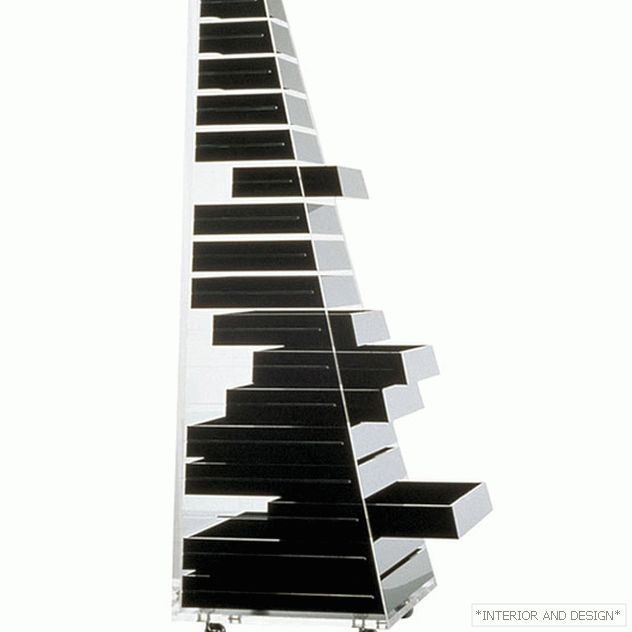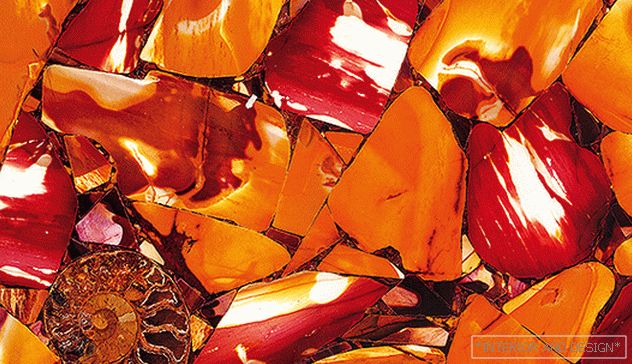Cotton grass is a rare plant in landscape design. Despite the fact that she feels good in different climatic zones in the wild, not every site will take root. Before you plant it near the house, you need to make sure that the owner will manage to maintain all the conditions for the safe growth of cotton grass. There are certain risks associated with this plant that need to be prepared for.
Content
- 1 Short description and photo of cotton grass
- 1.1 Properties and application in traditional medicine
- 2 What varieties can be planted for cultural cultivation
- 3 How cotton grass can be used to decorate a plot
- 4 Planting and further care
Short description and photo of cotton grass
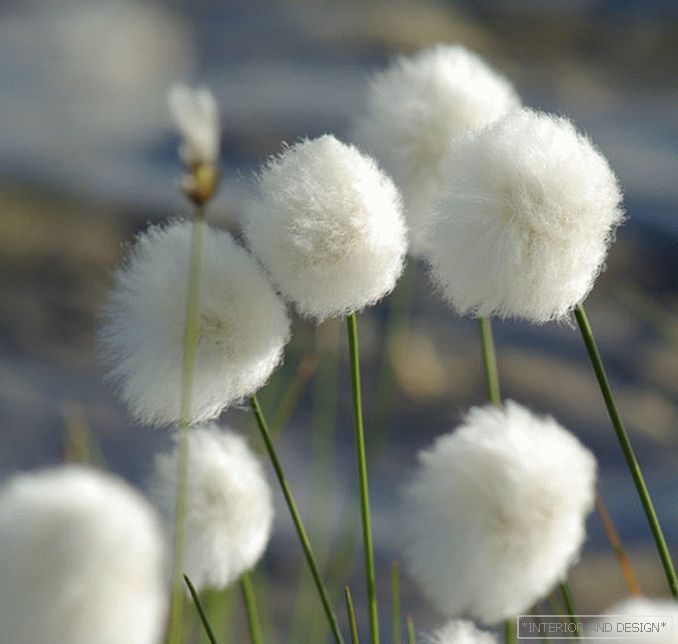
Landscape designers love cotton grass for endurance and decorative inflorescences in the form of soft balls.
This plant is found in swamps almost throughout Russia, it is frost-resistant and moisture-loving. It belongs to sedge, that is, it is a high grass from 30 cm (some varieties may be lower). Many people know cotton grass due to a small white inflorescence, resembling a fluffy ball of cotton wool. The leaves are bright green, dark, fairly dense. In total there are about 30 species of this plant, but only some of them are used in landscape design.
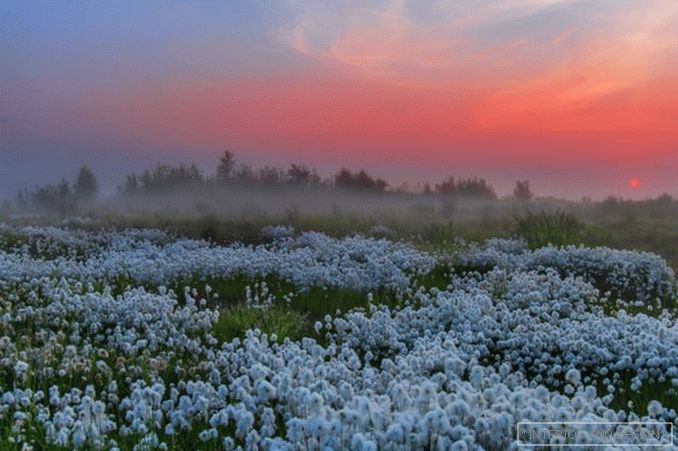
In nature, the fields of cotton grass look truly fantastic.
This plant is a perennial. It begins to bloom every year in spring, with the arrival of heat with pale yellow flowers, then a puff is formed, which is the main value when designing the site. Long growing in one place, forms voluminous hummocks. It reproduces mainly at the expense of the root system, therefore, to prevent the whole site with cotton grass, it will be necessary to uproot new shoots every year. Fluffy "caps" can remain on the plant until late autumn, but usually at the end of summer they begin to dry out.
Properties and application in traditional medicine
In folk medicine, vaginal cotton grass has become popular, while official medicine does not recognize its medicinal properties and cannot be found in pharmacies. People have used this plant for centuries in inflammatory processes in the body. This culture has a pronounced diuretic effect, can remove uric acid salts.
When problems with the digestive tract, decoction of this herb helps to relieve pain, improves digestion, acts as a laxative. It has a sedative property, an infusion of dry grass is drunk for insomnia and anxiety. In some cases, the decoction is used as a local application for pain in the joints.
What varieties can be planted for cultural cultivation
Of the 30 varieties of this plant are used in landscape design are usually the following:
- vaginal marsh (for a beautiful puff);
- Sheichzer (for a small height);
- narrow-leaved (for inflorescence consisting of several flowers).
Less decorative multicolored and broadleaf. For disembarking on the site, cotton grass is more often used. The height of this species from 30 to 80 cm, a flower in diameter of about 3 cm, dense, has a uniform white color. The flower is pale yellow, inconspicuous, appears with the first heat. By the beginning of summer, a puff is formed at the place of the flower, which by the autumn takes on a brown tint. As an ornamental plant, flowers are no longer suitable, so they can be cut. It will not affect the reproduction of culture. Loves light and moisture, not suitable for the south of Russia. Most often used for registration of reservoirs.

A good option for planting cotton grass will be its placement in the coastal zone of an artificial reservoir on the site
For a plot without a reservoir, Sheichzer’s cotton grass is used. It is distinguished by its short stature, from 10 to 30 cm, and its puffs are very voluminous. It does not form hummocks during growth, so it can be planted on a lawn with decorative herbs. It is frost-resistant, suitable for cultivation in the northern regions with short summers and snowy winters. Loves open space and sour soil.
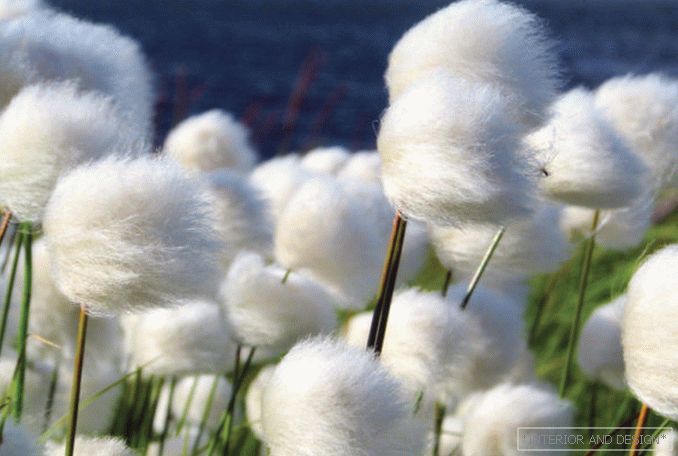
Unusual beauty of the green lawn will give white lumps of cotton grass, it is perfectly combined with other decorative types of herbs
Narrow-leaved cotton grass также любит прохладу, но очень восприимчива к влаге и свету. Встречается по всей территории России, включая вершинные болота в горах Юга. Высота может достигать 80 см, причём чем меньше у такой разновидности пространства, тем выше она растёт. Пуховка белая, неплотная, на ветру волокна могут красиво развеваться. Ранней весной появляется соцветие из нескольких колосков, на котором образуются бледные цветки. Обычно в таком «зонтике» 4–5 цветков, и потом на их месте будет столько же пуховок.
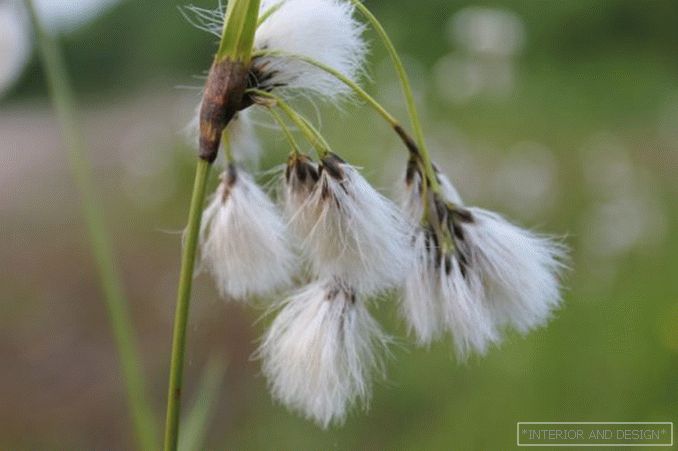
On the site, it is better to use cotton grass yourself, without sharing it with other flowering plants.
How cotton grass can be used to decorate a plot
In landscape design cotton grass is most often used for the design of reservoirs. The plant loves a sufficient amount of moisture and good illumination. Sometimes gardeners try to arrange alpine slides with the help of cotton grass, but these undertakings fail.
Planting cotton grass next to other plants is not recommended, as it has a strong root system, which over time begins to actively develop and can "survive" less stable neighbors.
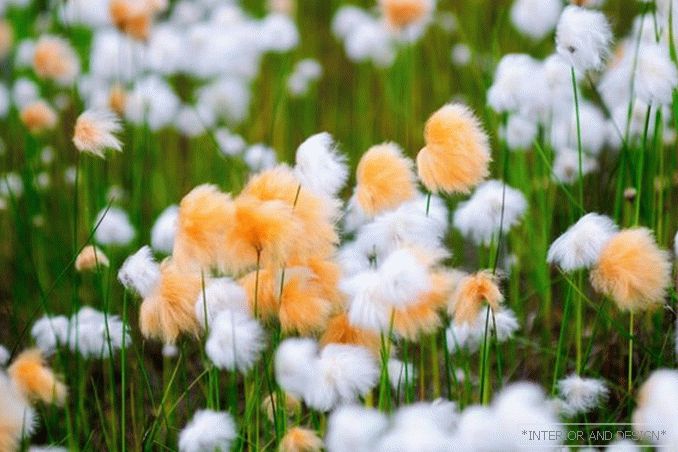
The combination of white and peach shades is especially charming.
The plant loves bright light and open spaces. For this reason, you should not plant cotton grass along the walls of the house, for it is necessary to allocate a separate place. Along the edges of the ornamental pond you can land it next to the usual sedge, but you need to monitor the further settlement. For 4–5 years, it is able to completely inhabit the banks of the pond, cutting off the approach to it. Low-growing species can be planted separately on the lawn, but you must also be prepared for the fact that in the spring you have to fight with new shoots.
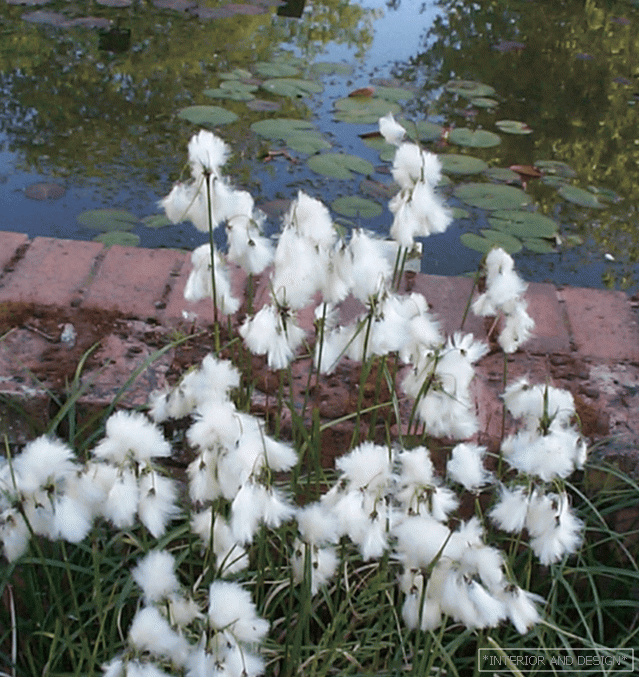
Only owners of vast lands can allow themselves to be adorned with cotton grass
Planting and further care
For landing you can use:
- seeds;
- ready plants.
It must be borne in mind that it is difficult to bring a ready-made plant from the swamp itself, since not all cotton grass will take root with damaged roots. But in specialized greenhouses you can order ready-made seedlings, specially prepared for the design of the site. It is best to use seeds, they can also be bought ready-made.
Seeds are not soaked in advance, and planted directly into the ground. Despite the abundance of seeds in the puff, this plant does not reproduce self-sowing. In nature, seeds tolerate grass-eating animals, and the plant itself also reproduces thanks to the root system.
What conditions need to create for cotton grass:
- acidic soil rich in organic matter (you can use composted with your own hands);
- a large amount of moisture (a plant in nature always has access to water, so it will be most comfortable for him either with daily watering, or on the shore of a reservoir);
- good illumination (grows well in the open areas of the marshes, in the shade of a large tree it will be uncomfortable).
After the seeds are planted in the soil, the bed is watered, and then organic fertilizer or vegetable humus can be added. In the future, you may need additional feeding seedling, if it is bad to grow. To keep water better at the roots of the plant, you can create a composition of moss and lichen.
It is important to understand that creating an alpine slide with cotton grass will not work. She does not like dry soil and close proximity to other plants. Ideally, this culture should create conditions similar to the natural conditions for its dwelling in wildlife. She feels great where many plants do not survive. For this reason, most often fluffy beauty is used for registration sites in regions with a cold climate.
So, even though cotton grass grows in swamps in nature, landscape design is quite capricious. At the same time, it does not require careful maintenance and is suitable for people who do not like to mess around in the ground for a long time. It can be planted with seeds or already prepared sprouts, it is only important to choose the right place. The soil should be acidic, rich in peat. Fluff need a lot of light and moisture. And in order to avoid settling the entire plot, it is enough to uproot new shoots that have appeared in plants in the spring.

